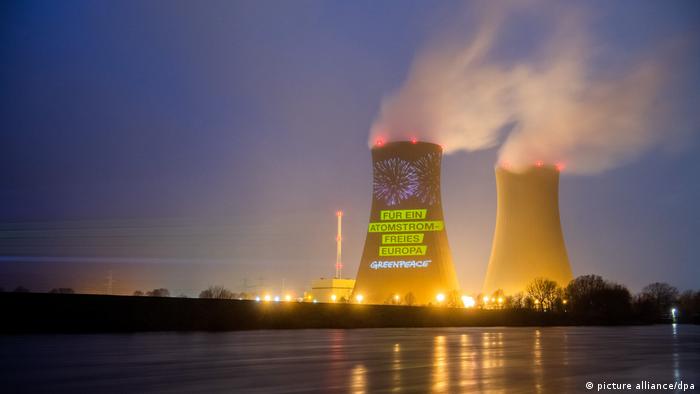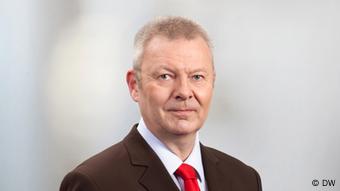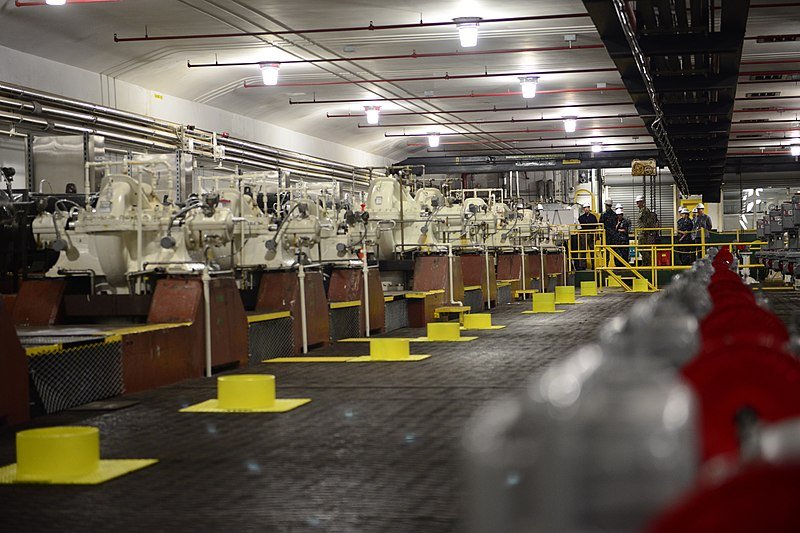Opinion: Nuclear energy is not sustainable
The EU wants to partially label nuclear power investments as climate-friendly. That could slow down the development of sustainables but not stop it. Nuclear energy is not making a comeback, says DW's Jens Thurau.

For a Europe free of nuclear power, a light installation on Germany's Grohnde power plant reads
Two news reports at the beginning of this year concerning the future of nuclear energy seem to come from different worlds: While in Germany three of the last six remaining nuclear power plants have just been taken off the grid, the EU Commission has published a plan according to which investments in gas and nuclear power plants are to be considered climate-friendly under certain conditions.
In Germany, the country's decision in 2011 to phase out nuclear energy, is going ahead largely without a fuss. Unlike many decades earlier, it is no reason for heated debate, but rather a minor announcement.
The French push for nuclear
The EU, on the other hand, is feeling the pressure from France, which has 58 operational nuclear power plants. The country's national energy supply is based on nuclear power. President Emmanuel Macron has skillfully used the temporary power vacuum caused by the change of government in Germany to push through a revaluation of nuclear energy. It's unlikely Germany will be able to do anything about it. The issue is likely to land Germany's Green Party, a coalition partner in the new German government, in considerable trouble. That's because the new year kicking off with nuclear energy potentially being considered climate-friendly would amount to a political betrayal for the Greens and their voters.
For years, advocates of nuclear power plants have been lobbying for the allegedly sustainable energy source since the reactors are free of greenhouse gas. The truth is that, unlike coal-fired power plants, nuclear power plants do not emit carbon dioxide into the atmosphere while in operation.
Nuclear contamination a real threat
However, it is also true that uranium mining produces greenhouse gases. And it is not sustainable at all when you consider that in the wake of accidents at nuclear power plants like in Chernobyl in 1986 and Fukushima in 2011, entire regions become uninhabitable for long periods of time, with the general public rather than the nuclear industry shouldering the huge costs of dealing with the disasters.
What is also completely forgotten in the Brussels debate on nuclear energy is the mammoth task all countries that still operate or have operated nuclear power plants face — the disposal of radioactive waste. In Germany, too, the search for a final disposal site is an issue that will take generations to resolve, not to mention the actual process, which will cost billions.
Can nuclear power be a sustainable form of generating energy? Not really. Even building new plants is so expensive that it doesn't warrant the term "resource-efficient."
Defeat for the Greens
Things are different when it comes to gas. Germany has ambitious goals to phase out both nuclear energy and coal, which the new government wants to bring forward from 2038 to 2030. If that is to succeed, the country will have to rely on gas as a bridging technology for a long time to come if it doesn't want to import electricity and nuclear power from France at that.
But, on gas the Green party faces another defeat if German Chancellor Olaf Scholz gets his way with his endorsement of the Russian Nord Stream 2 gas export pipeline. That looks very likely.
So is nuclear power likely to make a comeback? Hardly. Basically, in countries that operate nuclear power plants, the lifespans of existing plants are being extended, while plans to build new plants are mostly failing because of the gigantic costs involved.
But there is an enormous demand globally for energy and it will certainly skyrocket again once the COVID-19 pandemic wanes. China, in particular, relies on all types of power generation, including not only renewable energies but also fossil fuels and nuclear power.
In the long run, however,countries will rely on renewable energy, even if there is a lot of lobbying for the old forms of energy generation. Even after the EU takes the decision to label nuclear energy investments as green, it is important to wait and see how many investors actually want to invest in outdated forms of energy generation. Most of the major investment funds have already withdrawn from climate-damaging coal. It's quite likely that they have little appetite to keep an outdated form of technology that comes with high risks alive for a few more years.
This opinion piece has been translated from German.













